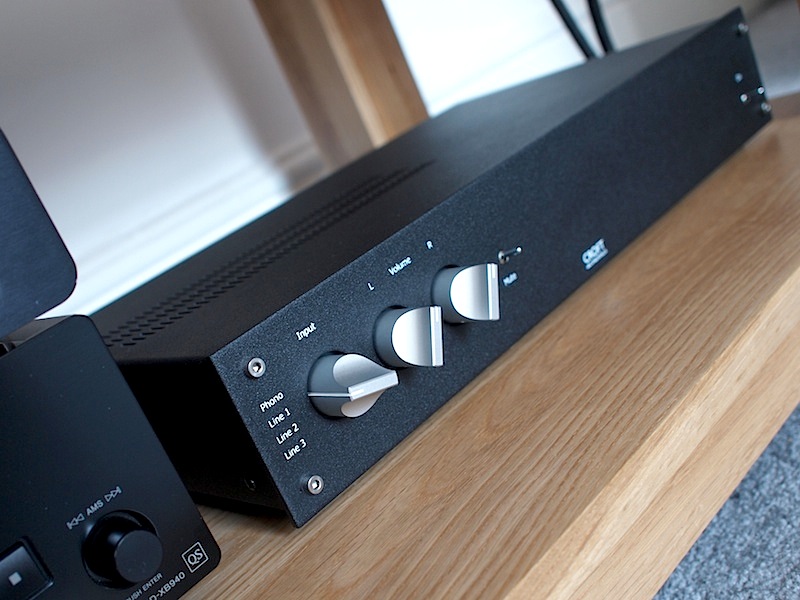The Croft Micro 25R turned up yesterday, and very nice it is too:
Initially I got a loud hum (well, everything is loud through large 95db efficient speakers in a small room!). This was, eventually, tracked down to an earth-loop. Lifting the earth wire at the mains plug on the Leak which has cured it, and I still have electrical continuity from the Leak's chassis to mains earth via the interconnects and Croft, so all should still be safe (I've checked this with a multimeter). All seems to be working. There is a little increase in background noise as to be expected, and the volume knobs are pretty twitchy but still usable – they start at 12 o'clock, and as pictured above are giving around 75-80db average at the listening seat from CD. Even though I'd like more travel the pots are nice and smooth and it's certainly easy enough to set level and balance accurately. It's very nice to have a balance facility, I've not had that for about a decade now!
This high gain is obviously 100% the issue of the Leak, not the Croft. 125mv for full output is simply insane. I can't for the life of me work out why it is like this – that's the kind of gain one would expect on a bloody guitar amp! It was originally partnered with a tube pre, the Leak Varioslope, so why did the Stereo 20 need such high gain? I think I'll look into getting the Leak's gain dropped down a bit as I assume it will drop the noise-floor a bit too, which would certainly be a bonus. Would changing the ECC83 in the Leak's input position to a 5751 help here? As long as it's reversible I'd far prefer to gently tweak the Leak as I need the Croft to work in other contexts, e.g. if I land a pair of active monitors at some point (which is still on the cards). I briefly tried the Croft with my 303 too (which behaved itself despite not being fixed yet), and it sounded lovely, it's actually a combo I could happily live with. Volume knobs were far more manageable too, and it's really quiet too.
Will report more on the Croft later, but I've heard enough to know it is a very good preamp indeed, and will be just the thing for any future plans as well as in it's current context. The next stage is to buy an MC step-up transformer and get to hear that phono stage...


